But as I keep telling myself, my blog is for myself, as much as it is for others, so I want to record some impressions.
It was interesting coming to Mexico after visiting the USA, where I'd seen the wonderful results of philanthropy in action in the artistic and cultural worlds; the Walt Disney Centre for the Performing Arts in LA, the Nasher Sculpture Centre in Dallas, LACMA, to name just a few. In Mexico City it seems that the role of promoting the cultural life of the city, and the country more generally, had been taken on by the state. (As an aside, it seems to me that we in Australia fall very much between two stools in this regard - neither the state nor philanthropists consistently act to promote our cultural life.) In addition, in Mexico City there seems to be a desire to make art accessible to the people, and to encourage thinking about national identity through public and popular structures and events.
This is probably most evident in the wonderful Museum of Anthropology. The two-storey Museum is built around a central courtyard. On the first level is the rich material culture of pre-hispanic Mexico, organised into rooms to display the variety and richness of the various regions and cultures. The Mexica (Aztec) culture of what is now Mexico City takes pride of place in a grand double-height central display:
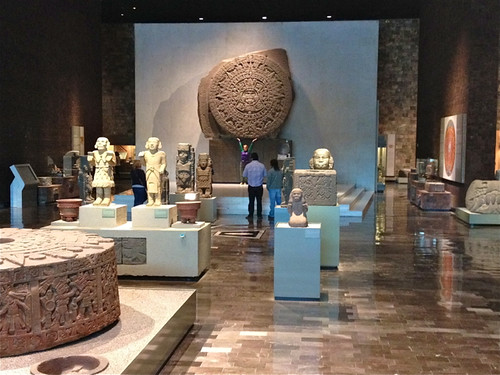
Artifacts from other Mexican cultures and traditions, such as these grand and beautiful Olmec heads, are arranged in rooms along the sides of the building:
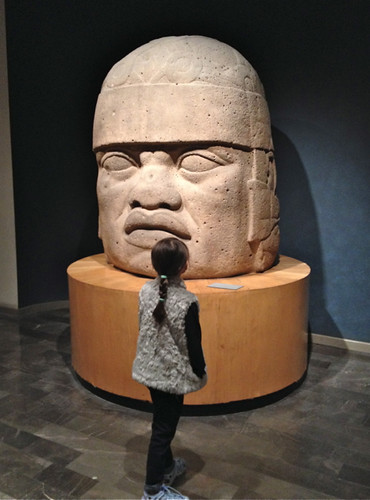
The second level of the Museum displays how people of the various regions live today, with the current-day practices located directly above those of their ancestors. We had limited time and energy, but explored the display from the southern Oaxaca region where we planned to visit. Oaxaca is also the region with the richest textile tradition - a predictable reason for me to visit!
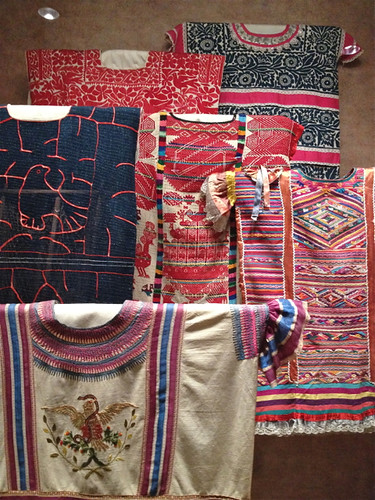
In a clearing outside the Museum is a display of the Totonic 'voladores' (flying) rite. The voladores circle a 20 metre high pole, chanting to drums and a pipe. Five of them then climb the pole and while one sits at the top, playing drums and pipe, the others gradually 'fly' in circles, upside down, hanging by one ankle, as ropes release them from the top to the bottom of the pole. It's a ritual that you almost can't watch as their strength and bravery are tested.
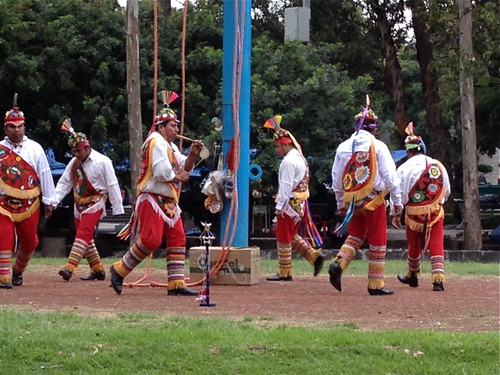
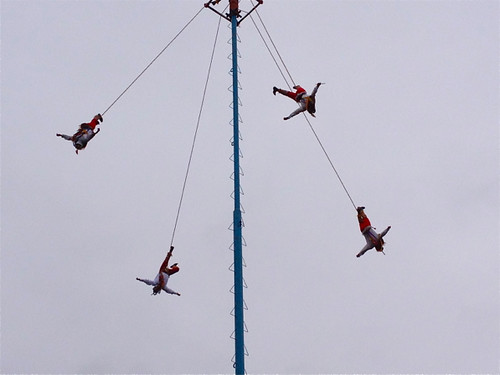
Mexico has a long-established tradition of using murals in public spaces to inform and educate its people. In the twentieth century this tradition has been used to reinforce Mexican identity, but has also resulted in grand, publicly accessible works of art. We visited the campus of the Universidad Nacional Autonoma de Mexico (UNAM) where the Central Library, is a ten-story artistic creation, depicting the history of Mexico from pre-hispanic times. The whole building is covered with mosaic stone murals designed and created around 1950 by artist Juan O'Gorman. All the mosaic stone tiles are in their natural colours - sourced from all around Mexico.
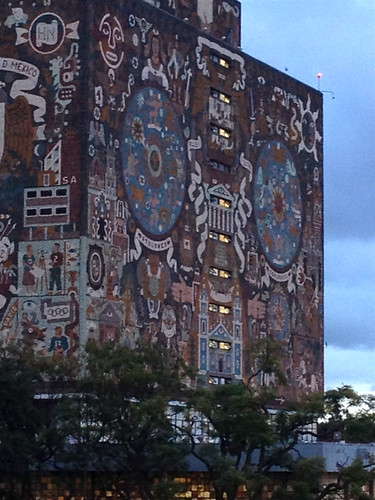
The Library, together with other university buildings, such as the Rectory, with its 3D murals by renowned artist Siqueiros showing the people urging the students to reform and advance the country, have been declared a UNESCO World Heritage site.
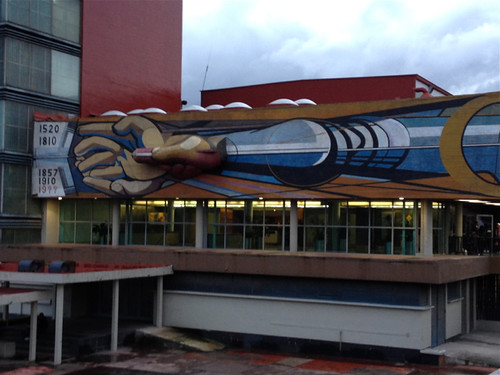
UNAM, by the way, was established in the sixteenth century, has over 300,000 students, has negligible fees, and has highly selective entry.
One day we were delighted to happen upon a street parade of colourful, fantastic creatures advancing along nearby Reforma - one of the grand central avenues of Mexico City. The city was promoting what we assumed was a competitive display of the creative imagination and skill of various local groups and associations. Giant versions of alebrijes, colourful ceramic figures of fantastic animals, insects and birds, had been recreated from papier mache, feathers, and fabrics and mounted on hand-pulled carts. Some had articulated limbs and many were guided by their handlers with swooping, dancing movements into the watching crowd.
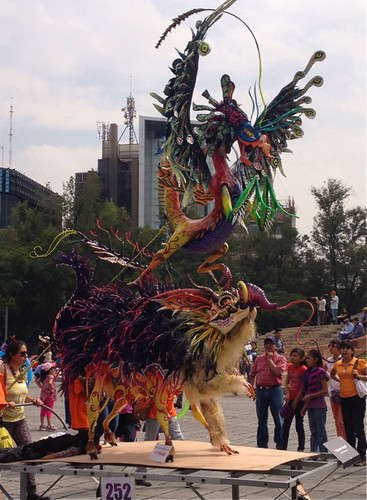
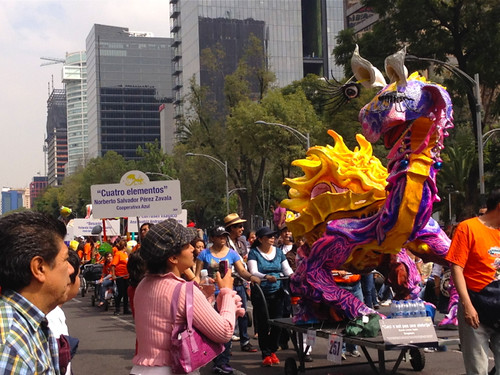
The parade went on and on. There must have been at least 40 of these wonderful creations advancing along the street. A couple of days later we saw that they had been grouped along the broad median strip of another street for passers-by to continue to enjoy the spectacle. Maybe I'm romanticising what we saw, but this colourful parade seemed to be yet another public promotion of popular art to emphasise Mexican identity and traditions.
Frida Kahlo was an artist who painted from the 1920s to the 1950s and is now an international icon whose image is emblazoned on tee-shirts and handbags around the world. Many of her works are colourful, naive, often horrifying self-portraits. Over more recent years she has become a public symbol of much that is essentially Mexican, dressing in colourful clothes and exotic jewellery drawn from indigenous traditions, personally presenting an image of female beauty that is distinct from European traditions, and painting a combination of suffering and celebration that seems distinctively Mexican. Kahlo also had links with many of the world revolutionary figures of the time, and saw no contradiction between advancing Mexican identity and promoting international socialism. We, like many other tourists, visited the Museo Frida Kahlo in Coyoacan. Frida Kahlo was born, worked in, and died in the 'blue house' that now houses the museum. The museum has a small selection of her paintings, with a focus on early portraits of her family and friends. I was rather taken by 'Frida and Stalin', where Stalin and the objective of world revolution loom over a stationary figure of Frida.
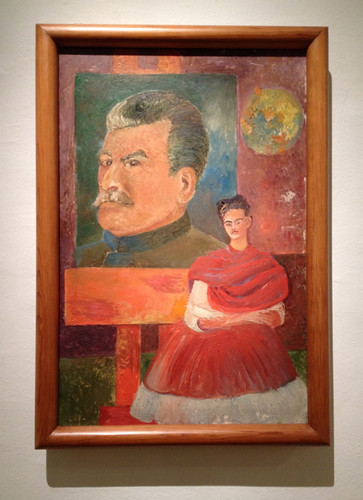
Some parts of the museum attempt to recreate Frida's life in the house. The dining room and kitchen, with their distinctive Mexican colours and display of pottery and other artifacts, including the skeletons so central to Mexican iconography, reveal Kahlo's immersion in Mexican craft traditions (though you can't help feeling everything is much cleaner and neater than it would have been in Frida's time).

Upstairs, Kahlo's studio, with the wheelchair that she used for much of her life, is particularly poignant.
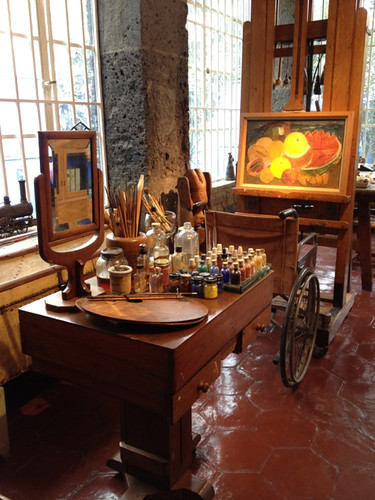
Mexico City is a bustling, crowded, international city. But it's also a city where you can't linger long without becoming aware of its very distinct national identity and of the many and varied ways in which that identity is promoted by the state through its art and craft traditions.
1 comment:
Extremely gorgeous photos; wow. Makes me want to visit all these places.
Post a Comment